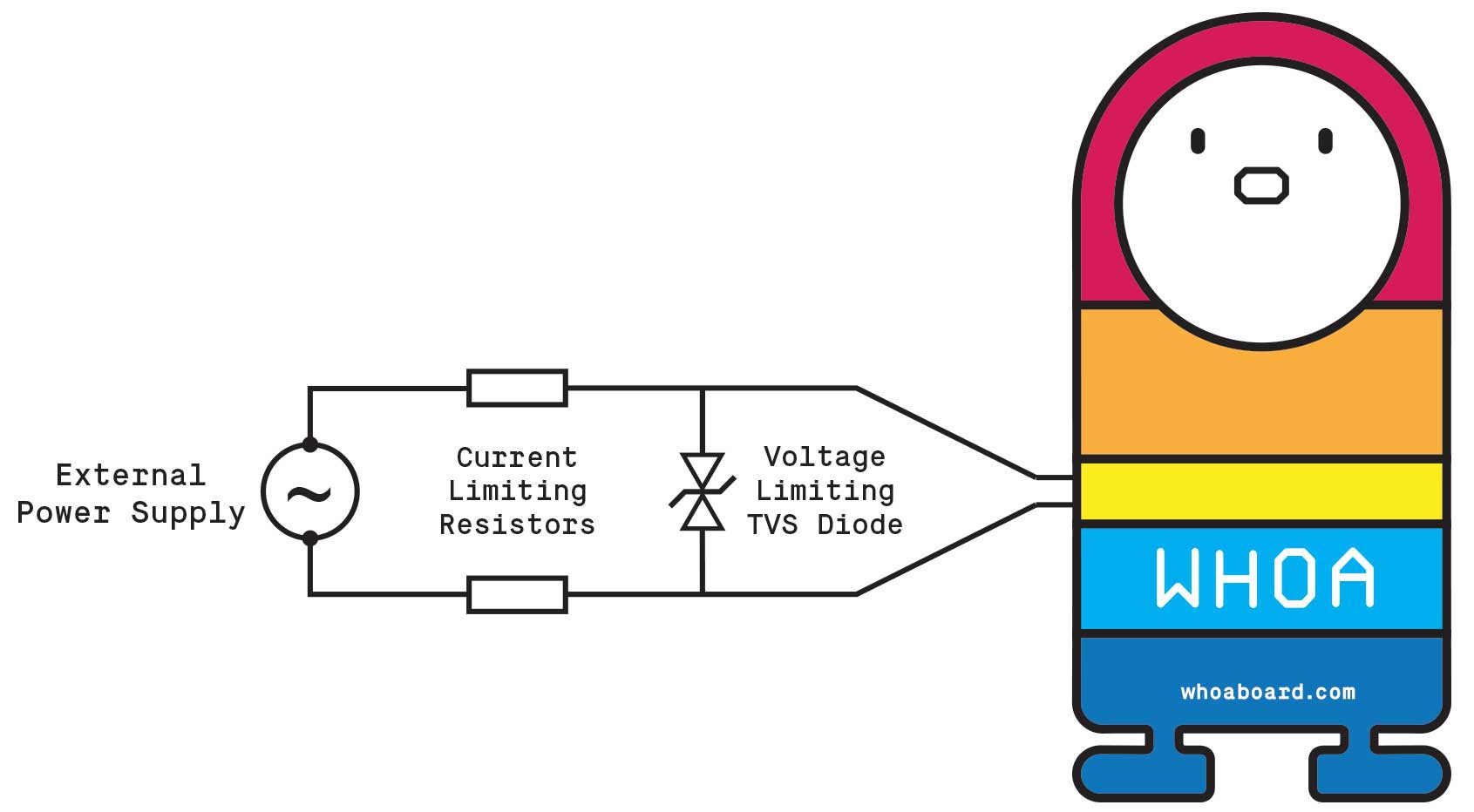 As mentioned previously, the limitation of the whoa board is that we are not allowed to put more than 3A and 150V (300 peak to peak) through it.
As mentioned previously, the limitation of the whoa board is that we are not allowed to put more than 3A and 150V (300 peak to peak) through it.
Accordingly, a simple solution which can make it compatible with any power supply is simple to limit the current and voltage going into the board.
NOTE: THIS APPROACH REQUIRES THAT A NON-TRIVIAL AMOUNT OF POWER BE DISSIPATED IN THE EXTERNAL COMPONENTS. PLEASE REFRAIN FROM STARTING ELECTRICAL FIRES.
This means that they have to be chosen appropriately to withstand the situation where the whoa board doesn't provide a load (as happens for part of the time during every touch sensing cycle).
This is important because the self oscillating power supply designs (like the ones in the videos in the previous post, and generally most commercially available EL supplies) increase in frequency and voltage as the load decreases. In fact, some supplies cannot be turned on without load because they will fry themselves.
Annnyway, in the interest of documentation, let's work out the math of how to appropriately choose these resistors and diodes here.
Let's suppose at it's max, the external supply outputs 400V peak to peak, and to be conservative, let's limit the max current to 2A.
In order to limit this current, we need 100 Oms of resistance. The path that the current flows through is already ~50 Om, so we need another ~50 externally. For the sake of symmetry (and to distribute the power dissipation) it's probably better to instead include two ~25 Om resistors, as drawn in the above schematic.
Because EL loads are capacitive, they have a much higher peak current than average current, which makes it difficult to compute a power rating for the resistors you choose. For most applications, a 1W resistor will probably be fine, but if you aren't sure, there's no beating experiment. If it starts getting uncomfortably hot, increase the power rating :).
In the next log, we'll talk about power dissipation in the above TVS diode!
 fool
fool
Discussions
Become a Hackaday.io Member
Create an account to leave a comment. Already have an account? Log In.